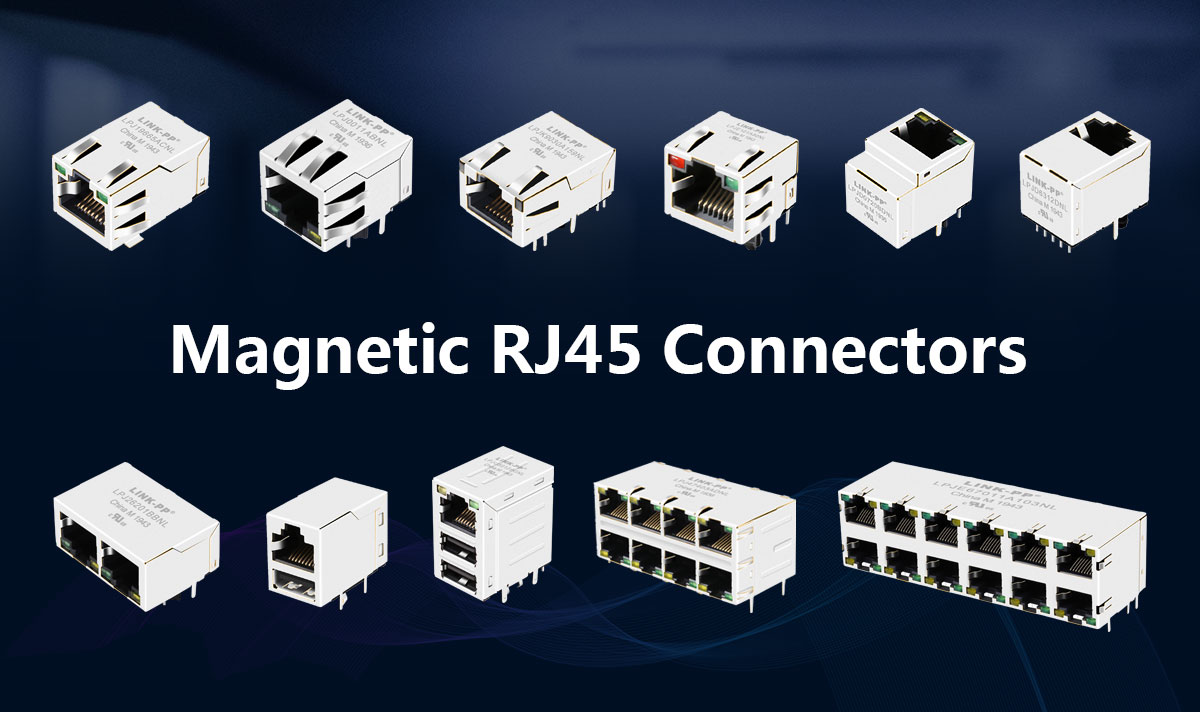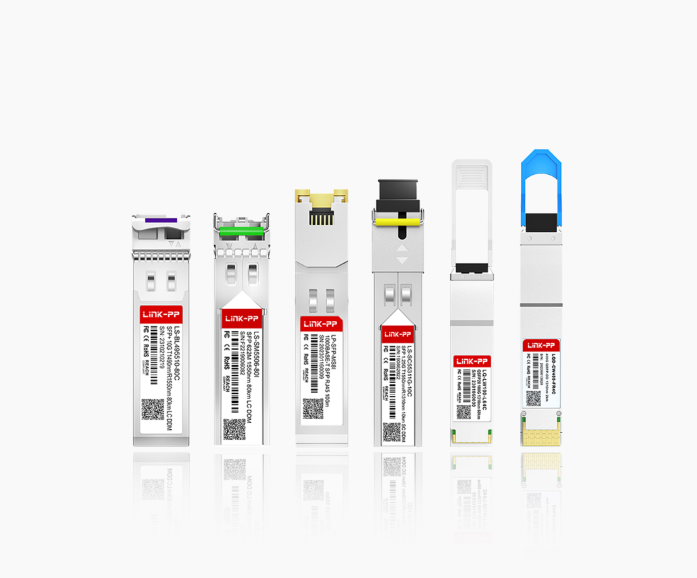
In the fast-paced world of networking, every component on a Printed Circuit Board (PCB) matters. For manufacturers of network switches, the RJ45 connector is more than just a physical port; it's the critical gateway for data. Traditional designs required a complex dance of discrete components—the connector itself, a separate magnetic module, and numerous passive components. This approach, while functional, often led to design headaches, increased costs, and board space constraints.
Enter the game-changer: integrated RJ45 connectors with built-in magnetics. This all-in-one solution is fundamentally reshaping how engineers approach PCB design for network equipment. This article will explore how this innovative technology is simplifying the entire development process, from prototyping to mass production, and why it's becoming the new gold standard.
📜 What Are Integrated RJ45 Connectors with Built-in Magnetics?
To appreciate the innovation, let's break down the components. A standard RJ45 connector is the familiar 8-pin jack used for Ethernet cables. The "magnetics" refer to a set of miniature transformers and common-mode chokes that are essential for any Ethernet interface. Their primary jobs are:
Signal Isolation: Providing electrical isolation between the sensitive circuitry on the PCB and the external cable, protecting against voltage surges and ground loops.
Signal Conditioning: Filtering out electromagnetic interference (EMI) and reducing common-mode noise, ensuring signal integrity and reliable data transmission.
Impedance Matching: Ensuring the signal transitions smoothly between the cable and the PHY (Physical Layer) chip on the PCB.
In a traditional setup, these magnetics are a separate module that sits on the PCB behind the connector, consuming valuable real estate and requiring careful routing. An integrated magnetic RJ45 connector ingeniously packages the connector and the magnetic components into a single, compact unit.
📜 The PCB Design Challenge: Traditional vs. Integrated Approach
The difference between the two design philosophies is stark. Adopting integrated magnetics for network switches directly addresses several core pain points for PCB designers and manufacturers.
The table below highlights the key contrasts:
Design Aspect | Traditional Discrete Design | Integrated RJ45 with Magnetics |
|---|---|---|
Component Count | High (Connector + Magnetic Module + Passives) | Low (Single Integrated Unit) |
PCB Footprint | Large, requiring space for both components. | Compact, significantly reduced. |
Layout Complexity | High; complex trace routing between components is critical. | Simplified; pre-routed internal paths. |
Assembly Time & Cost | Higher due to multiple pick-and-place and soldering steps. | Lower; single component placement. |
Signal Integrity Risk | Higher; dependent on PCB layout quality. | Lower; optimized internal isolation and filtering. |
Time-to-Market | Longer due to design, testing, and assembly complexity. | Faster; streamlined design and manufacturing. |
EMI/EMC Performance | Highly layout-dependent, requiring rigorous testing. | More consistent and predictable due to integrated design. |
As the table illustrates, the move to integration is a clear win for efficiency and reliability. This is precisely why manufacturers are actively searching for high-performance RJ45 connectors with integrated magnetics to gain a competitive edge.
📜 How Integrated Magnetics Simplify Switch Design: A Deeper Dive
The benefits extend far beyond a simple component count reduction. Let's explore the specific ways this technology simplifies life for network switch manufacturers.
1. Streamlined Layout and Reduced Board Space
The most immediate impact is on the PCB layout itself. By eliminating the separate magnetic module, designers free up a significant amount of board real estate. This is crucial for modern, high-density switches that pack 24, 48, or even more ports into a compact form factor. The simplified routing allows for cleaner signal paths, which is a fundamental best practice for optimizing network switch PCB layout.
2. Enhanced Reliability and Consistency
Every solder joint and discrete component is a potential point of failure. By integrating the magnetics, the number of solder joints is drastically reduced. Furthermore, the magnetic performance—such as return loss and common-mode rejection—is factory-tuned and consistent across every unit. This eliminates performance variations that can occur due to minor imperfections in PCB fabrication or assembly, leading to a more robust and reliable end product.
3. Accelerated Time-to-Market
With a pre-assembled and tested integrated connector, a significant portion of the signal integrity validation is already complete. Engineers spend less time simulating and troubleshooting the analog front-end circuit. This acceleration in the design cycle allows companies to bring new, innovative switches to market faster, a critical advantage in the competitive tech landscape.
4. Simplified Sourcing and Supply Chain
Managing a bill of materials (BOM) with dozens of components per port is a logistical challenge. Sourcing becomes simpler and more cost-effective when you consolidate into a single, high-value component from a trusted supplier. This is where partnering with a specialist like LINK-PP proves invaluable, offering a reliable supply of quality-integrated connectors.
📜 A Closer Look at RJ45 Connectors: The Integrated Evolution

The humble RJ45 connector has undergone a quiet revolution. While the external interface remains standardized, the internal architecture has evolved to meet the demands of higher speeds (1G/2.5G/5G/10GBASE-T) and denser designs.
Key features to look for in modern integrated RJ45 connectors include:
Shielding: Shielded connectors (like the common SMT metal shell types) are essential for ports operating at 1 Gbps and above to contain EMI.
LED Options: Integrated solutions often include slots for surface-mount LEDs for link and activity indicators, further simplifying assembly.
Performance Specifications: Look for components that meet or exceed IEEE 802.3 standards for insertion loss, return loss, and common-mode rejection.
When selecting a component, it's not just about the specs on paper; it's about proven performance and support. For instance, the LINK-PP LPJG19018CNL RJ45 connectors with integrated magnetics is an excellent example of this evolution. It offers a robust, shielded SMT design, superior EMI suppression, and is engineered for high-speed data transmission, making it an ideal choice for demanding network switch applications. This specific model exemplifies how a well-designed integrated connector can solve multiple design challenges simultaneously.
📜 Why Choose LINK-PP for Your Next Network Switch Project?
In a market filled with options, LINK-PP has established itself as a leader in connectivity solutions. Their focus on innovation and quality makes them a go-to partner for manufacturers looking to leverage the benefits of integrated magnetics.
Proven Expertise: LINK-PP specializes in high-speed data connector solutions, with a deep understanding of the signal integrity challenges in network hardware.
Robust Product Portfolio: They offer a range of integrated RJ45 connectors, including standard, high-port-density, and specialized industrial versions, ensuring you find the right fit for your specific switch design, whether it's for enterprise, data center, or IoT edge applications.
Global Support & Reliability: With a commitment to quality and a global supply chain, LINK-PP provides the reliability and technical support that large-scale manufacturing requires.
📜 Conclusion: The Future is Integrated
The shift towards integrated RJ45 connectors with built-in magnetics is more than a trend; it's a fundamental improvement in network hardware design methodology. For network switch manufacturers, this technology delivers tangible benefits: a simplified PCB layout, reduced component count, enhanced reliability, and a faster path from concept to production.
By addressing the core challenges of PCB design simplification for network switches, this integrated approach allows engineers to focus on higher-level innovation rather than wrestling with analog front-end complexities.
🚀 Your Next Step: Elevate Your Design.
Don't let outdated component strategies hold back your next-generation network switch. Explore how integrated solutions can work for you.
📜 FAQ
What makes integrated RJ45 connectors better for your network switch design?
You get fewer parts on your switch. You save board space and make your ethernet switch easier to build. Your network runs with less noise. You also meet tough standards for data and signal quality.
How do integrated connectors help with data reliability in ethernet switches?
Integrated connectors keep magnetics close to the port. This setup protects your data from noise. Your switch sends and receives data with fewer errors. You get strong performance in high-speed network switches.
Can you use integrated RJ45 connectors for different port configurations?
Yes, you can choose from many port configurations. Your ethernet switch can have one port or many. You pick what fits your network. These connectors work well in all types of switch designs.
Do integrated connectors support high-speed network switches?
You can use integrated connectors in high-speed network switches. They handle fast data rates. Your ethernet switch keeps up with modern network needs. You get reliable data transfer every time.
What should you consider when choosing connectors for your ethernet switch?
You need to check your switch size, data speed, and network needs. Look at port configurations and how much space you have. Pick connectors that match your ethernet switch and help your data move fast and safe.




